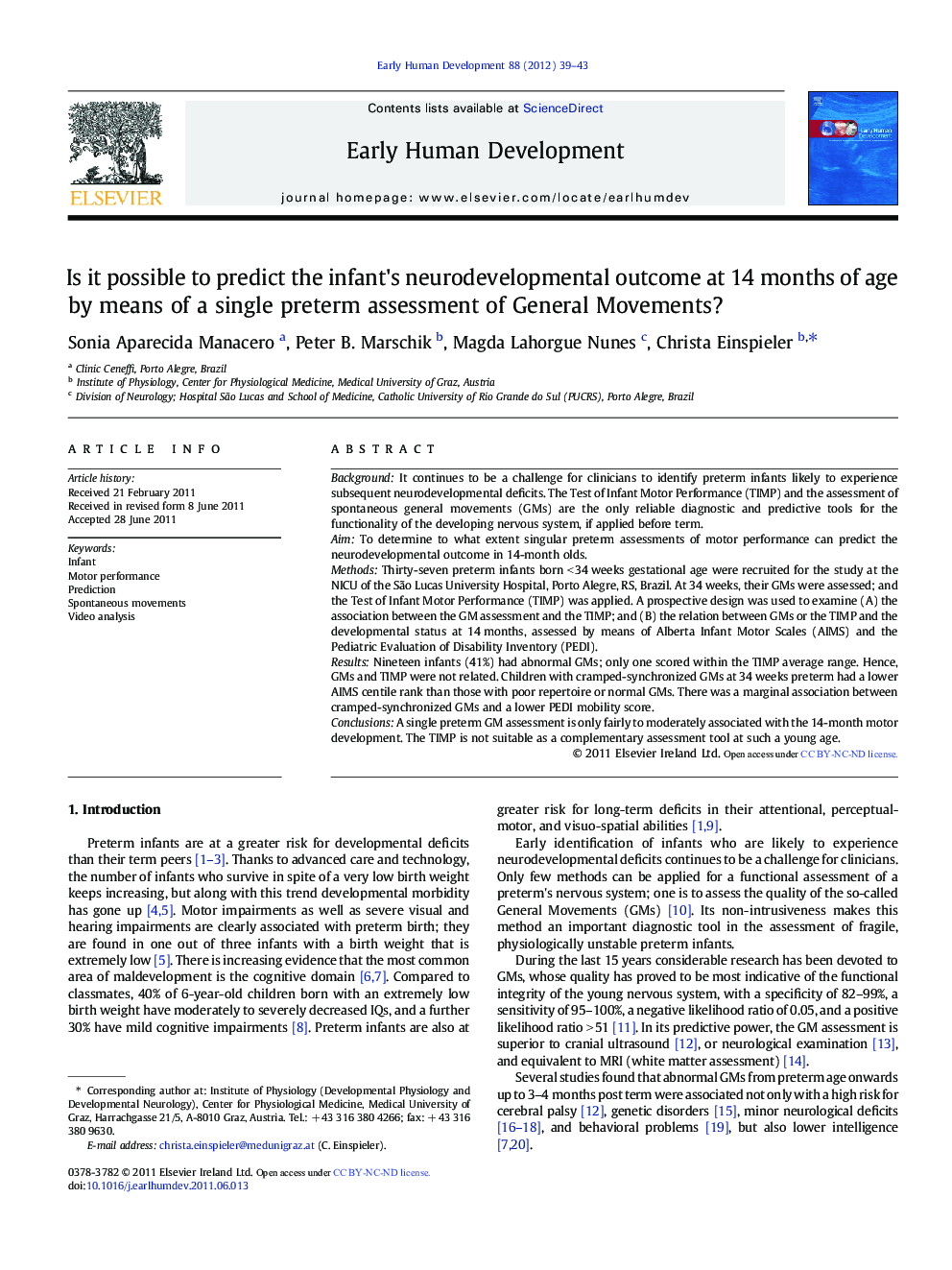| Article ID | Journal | Published Year | Pages | File Type |
|---|---|---|---|---|
| 6172097 | Early Human Development | 2012 | 5 Pages |
BackgroundIt continues to be a challenge for clinicians to identify preterm infants likely to experience subsequent neurodevelopmental deficits. The Test of Infant Motor Performance (TIMP) and the assessment of spontaneous general movements (GMs) are the only reliable diagnostic and predictive tools for the functionality of the developing nervous system, if applied before term.AimTo determine to what extent singular preterm assessments of motor performance can predict the neurodevelopmental outcome in 14-month olds.MethodsThirty-seven preterm infants born < 34 weeks gestational age were recruited for the study at the NICU of the São Lucas University Hospital, Porto Alegre, RS, Brazil. At 34 weeks, their GMs were assessed; and the Test of Infant Motor Performance (TIMP) was applied. A prospective design was used to examine (A) the association between the GM assessment and the TIMP; and (B) the relation between GMs or the TIMP and the developmental status at 14 months, assessed by means of Alberta Infant Motor Scales (AIMS) and the Pediatric Evaluation of Disability Inventory (PEDI).ResultsNineteen infants (41%) had abnormal GMs; only one scored within the TIMP average range. Hence, GMs and TIMP were not related. Children with cramped-synchronized GMs at 34 weeks preterm had a lower AIMS centile rank than those with poor repertoire or normal GMs. There was a marginal association between cramped-synchronized GMs and a lower PEDI mobility score.ConclusionsA single preterm GM assessment is only fairly to moderately associated with the 14-month motor development. The TIMP is not suitable as a complementary assessment tool at such a young age.
